Content warning
This story may contain sensitive material or discuss topics that some readers may find distressing. Reader discretion is advised. The views and opinions expressed in this story are those of the author and do not necessarily reflect the official policy or position of Vocal.
Scaffold - Controversial Art and it's Aftermath
An Art Analysis on Sam Durant's 'Scaffold'
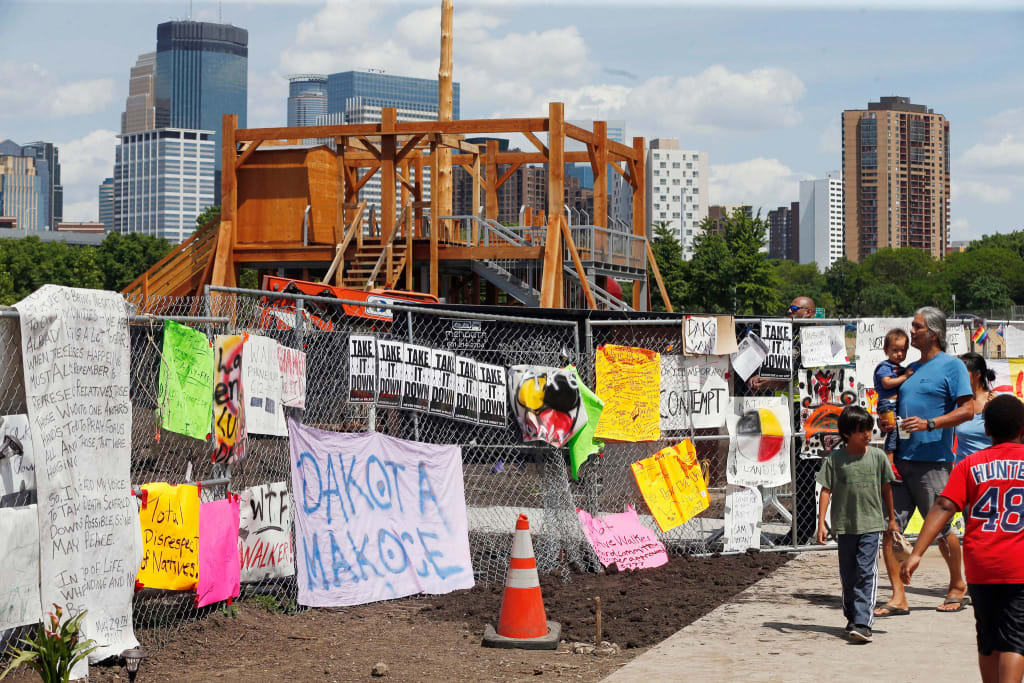
In May of 2017, The Walker Art Center in Minneapolis, MN was just about to open it’s doors after renovations with Sam Durant’s sculpture “Scaffold” among them. But just days before the actual opening, Walker’s Curator Olga Viso put out a statement about her new found discovery that ‘Scaffold’ was offending many Dakota natives. Scaffold caused a controversy that brought up generational trauma in many Dakota natives as well as bringing light to an important question: should white artists be appropriating other races and culture’s pain in their art work?
Durant is often put in the forefront when the controversy is brought up, seen as the perpetrator, but there were many other parties involved in Scaffold’s installation at the Walker. Many of which could have prevented this. With that said, it is my belief that the events taking place during and after the Scaffold incident opened up the art world to speaking on some hard-hitting topics it had previously ignored. Though Scaffold caused much suffering and pain, it also lead to some good in the art world.
Who is Durant?
Durant’s first recollection of interest in exploring topics such as civil injustice and capital punishment happened in the early 90’s. The specific memory he’s spoken about was the protest on Plymouth Rock on Thanksgiving Day, held by The United American Indians of New England. Durant studied at the California Institute of Arts for his MFA. He became a resident artist at the Walker in 2001 and stayed on until 2003. During his time there he worked closely with native American youths on a sound piece. When looking back on his time at the Walker, Durant had this to say in 2020, “We worked really hard to build bridges… those bridges were not maintained after I left.” Vartanian, “Sam Durant Revisits.”
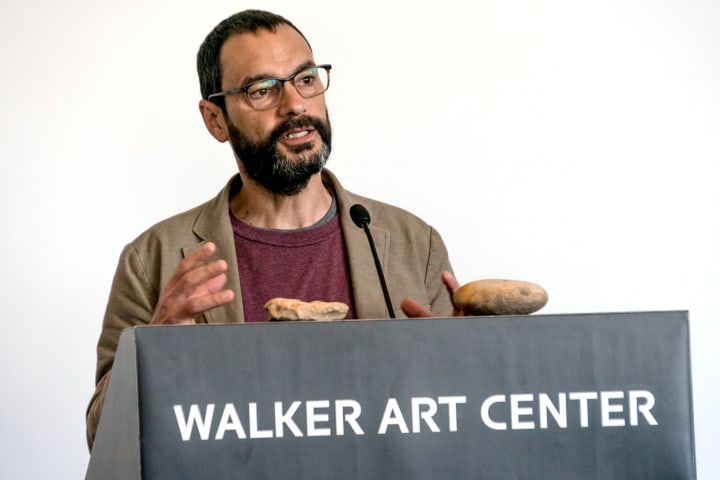
In 2008, Durant’s art began to focus on taking on white supremacy “We need to learn from the people we’ve been oppressing.” Regan, “Protests.” When often questioned about his work in this time period, he recalls the questioners debating whether it was right to tackle race as a white artist, but it was white people asking these questions of him. Then, his response would be “we created race and racism and we used it to our benefit. And it’s important to be involved in acknowledging it and dismantling it.” Carolina, “Q&A.”
In 2012 Durant was commissioned for a sculpture installation from Germany. The piece was a cumulative representation of the gallows used for government sanctioned public hangings in the US’s history. Among them was the gallows that hung 38 Dakota men in 1862 in Mankato, Minnesota. This piece of the puzzle is what stroke controversy over Durant’s well-intentioned sculpture in May 2017.
Initial Talks with Dakota Leaders and The Walker's Part in All of This
During Olga Viso’s press release for the Walker, one of the main points that was brought up was that they hadn’t realized how literally the work emulated the gallows used in the mass killing and “Failed to readily prepare for the impact of the work upon the Dakota Community in advance of this works siting.” Regan “”Protests.” Not long after this was released, there were protestors putting up signs along the fenced walls yelling to “burn it down.” Durant recalled the day it all went down, he got a call that they wanted to burn it down.
His initial reaction was to let them do just that; “yeah ok let them do that… it’s a pile of lumber… then we can sort it out.” Vartanian, “Sam Durant Revisits.” But soon realized that the walker would not allow this, and that if it did happen, participants could be charged. Durant was afraid that in the outrage someone might get killed. He focused on helping de-escalate, even making sure police didn’t arrest the protestors, and that they protected them from some white nationalists who’d made their way to the area.
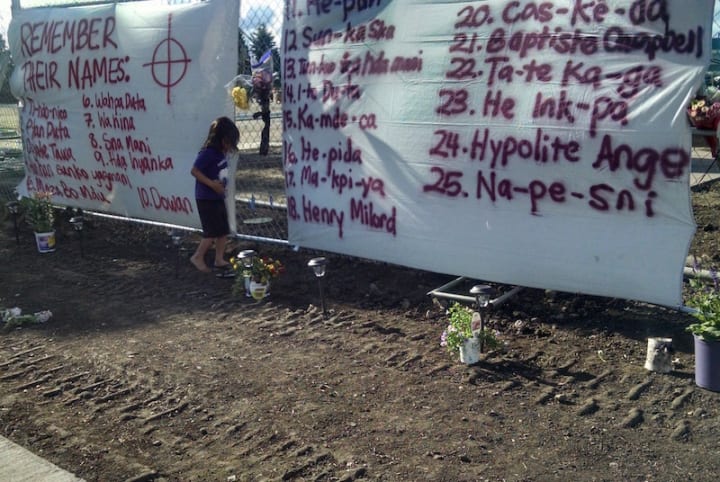
During the initial talks, Durant offered to take down the pieces that directly related to the Dakota massacre, but that idea was shot down, perhaps because of how closely the entire piece resembled the gallows. Varitian, “Sam Durant Revisits.” Some of the things Dakotas spoke out about were the Walker’s lack of due diligence ‘regarding community engagement’ and asked the question ‘why willfully exclude us?’ Regan, “Protests.” Graci Horne, who is a Dakota woman with a degree in Museum Studies said, “We don’t need non-native people to tell our stories for us.. most institutions have non native representation about our history and it’s not right.” Regan, “Protests.” With only a few days since the press release, it had already become a national phenomenon, and mostly everyone in the art world was asking these same questions.

During the meeting between the Walker, Dakota leaders and Durant, the artist offered up not only the sculpture, but the intellectual rights as well. Though Durant has admitted that not even his legal advisor knows what all this entails, it was seen as a gesture of good faith so that the Dakota Elders had piece of mind that Durant could never reconstruct Scaffold or profit off of it again. Vartanian, “Sam Durant Revisits.”
It took 4 days to deconstruct the sculpture, and the burning was scheduled to take place on June 1st of that year. But soon before it was to happen, the Dakota Elders came back stating that it would not be burnt because “fire is sacred and shouldn’t be used for destruction.” Hilarie “Dakota.” The ultimate decision was to bury it at an undisclosed location and time.
The Reason for the Outrage
Why exactly had Scaffold been received so differently in Minnesota versus the years it spent in Germany? From 2012 to 2015 Scaffold set on display to the public in Germany and was overall well received. It was this success that lead Durant and the Walker to be blind to how the American public would react to it on American soil.
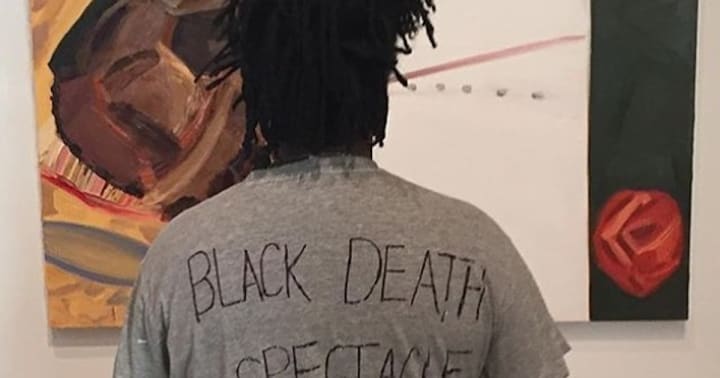
Often when Scaffold is talked about, another artist is brought up, Dana Schutz who did a painting of Emmet Till. In a similar fashion, her painting was well received over seas, but not accepted and caused public outcry back in the USA. Why does it seem that Americans can more easily vilify artist’s work than Europe does? Europe has a long and ugly history, but they haven’t shielded away or demolished any of the art from that time due to it’s historic nature. I believe this is part to the reason why they didn’t receive Scaffold so negatively. The other part missing to the puzzle is that Durant’s work represented the history of America. Even though that history included a mass killing, in Germany it was just saw through the lens that the artist intended it to. It wasn’t their history, so they had no way to be upset by it. Vartanian, “Sam Durant Revisits.”
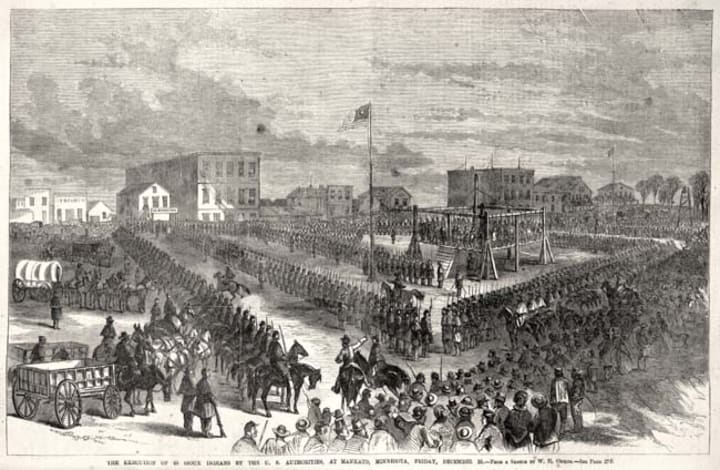
But when he brought that same history to the USA – especially since it was in Minnesota where that mass hanging took place- it’s history was perceived as a specific moment in Midwest history that traumatized the Dakota people. What was so controversial was not only that it depicted a mass hanging of the Dakota people, but did so on former Dakota land, not far from Mankato, where the actual hanging took place. When shown in Germany he encouraged people to walk on it, though he saw this as an interactive piece about capital punishment and public executions, the Dakota could not see it as anything else than a jungle gym built from the gallows that killed many of their ancestors.
Could this have been less controversial elsewhere? Afterall, it wasn’t controversial in Germany. The only places I think it would be controversial is anywhere in the USA. The USA was home to all native Americans long before the settlers arrived, and the Dakota people were all over the country. But It was especially detrimental since it was brought to Minnesota.
What Durant Did in the Aftermath
To many artists, such a controversy could be seen as career ending. But for Durant, it was an enlightening, humbling moment that didn’t stop him, but rather propelled him further into the issues he was passionate about. He went on to win a Rapport Prize in Boston, participated in the DiCaprio Foundation art charity event for climate change, and gave a talk in Mexico City at SOMA Education organization, addressing lingering concerns that Scaffold arose. He even got an interview with The Times which was focused on the public executions. Eler, “Prize.”
In 2020 he published a long essay called “Controversy” that reflected on the incident as well as did an appearance on Hyperallergic’s podcast. In all of these instances, he reflected on the impact and worked hard to create better art pieces that would not harm those he wished to help. He discussed many things about his experience with Scaffold, the Walker and the Dakota Elders. Though many anti-censorship groups were upset with Durant’s situation and for him ‘giving into censorship,’ in years since the incident he’s clarified that he doesn’t see what happened to him as censorship because by definition it is a power taking away the words of the unempowered. The Dakota on a political and art world level were not more powerful than Durant in that situation, and the work no longer was fulfilling his intentions, therefore it was not censorship. Carolina “Q&A.”
Lessons to be Learned
Since Scaffold, he’s come to realize that you can culturally appropriate and traumatize a group of people without even using their images or bodies. He said the experience was humbling. It has changed how much awareness he has and how he will represent issues in his work in the future. He still feels he has the freedom to chose whatever topic he wants to, it’s more of a question of how he does it, what he’s able to use. He’s still committed to these kind of issues in his work. Carolina, “Taken Down.”

Since 2017, the Walker has gone through some changes. They opened up more avenues of communication with the Dakota community, and in 2020 had an installation placed by Angela Two Stars in the exact location Scaffold had been previously. Angela Two Stars talked about her work being about the Dakota language, an homage not just to the language, but to her late grandfather who was one of the elders who kept the Dakota language alive in a time when there were only 10’s of people who spoke it on their reservation. It was also a way for the local population visiting the Walker to have a chance to interact with the Dakota language, something Angela has been passionate about since her early years as a graduated artist. Two Stars, “Interview.”
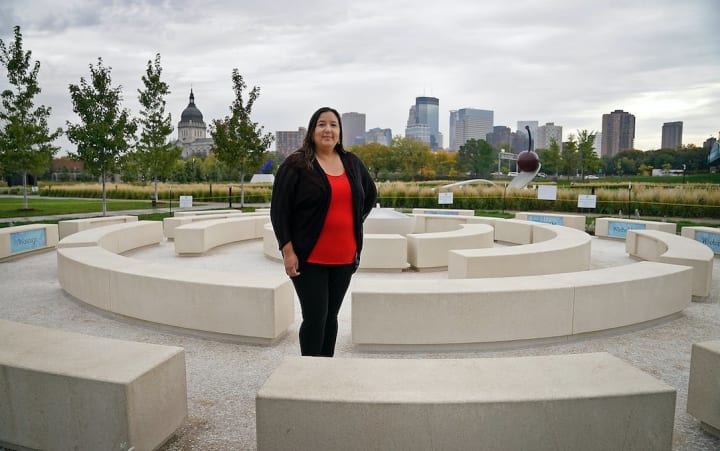
But is this gesture from the Walker enough to make up for the lack of foresight? Does it mean that the Walker is keeping an open line of communication to this day, or was this just a public symbolic way of making up for the wounds created by allowing Scaffold to stand in their park? According to Durant, Since Olga left the walker, they haven’t continued to work to fix these issues. Vartanian, “Sam Durant Revisits.”
Those at Fault
What went wrong was that Durant didn’t’ take into consideration where this installation would be placed, as stated before, this was especially hurtful because it was displayed on former Dakota land, as well as being the same state that the hangings took place in. It seems he also did not consult with any Dakota people on how to present the work in a non offensive way, despite having ties to them from his time at the Walker back in 2001-2003, in addition to his original interest in these topics taking root in him because of the United Native Americans of New England. With this, he should have had the tools and knowledge to critically think of how it could affect it’s native inhabitants, especially coming from a white artist. With that said, the same could be said for the curators of the Walker.
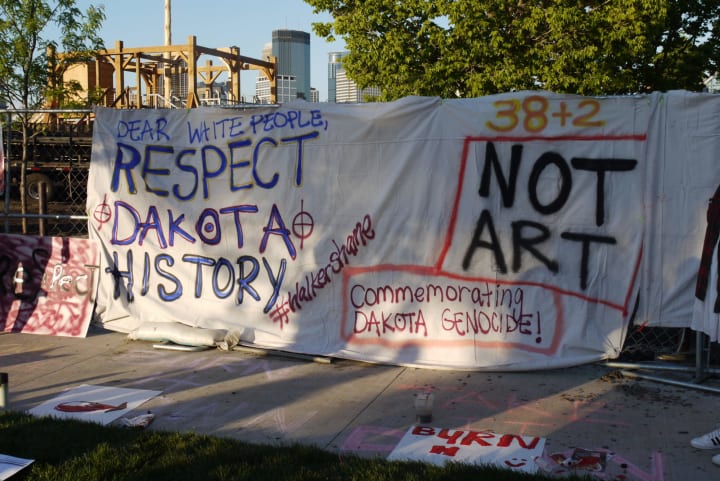
I think that there were many people that could of noticed the offensive context of the art before it ever made it’s way to the Walker. Because the work had already been made for another event years prior, the Walker had ample resources and time to look into what the work was about and how it might affect Minnesota locals.
Conclusion
From the Scaffold incident, we can learn that there is a fine line between artists bringing attention to humanitarian/political issues and using minorities’ experiences to highlight an agenda that the artist (who is not of that minority) is trying to accomplish through their artwork. Scaffold doesn’t have the same historical contexts in Germany as it did on US soil. It’s opened up conversation across the nation and even the world; considering your audience, cultural appropriation, generational trauma, and profiting off a community’s pain. Though Scaffold caused a lot of pain and trouble for all parties involved, it’s opened up avenues of communication between the Walker and Dakota people, generated conversation on heavy yet important topics, and helped Durant to become a more aware and reflective artist for his future works.

1. Sheila Regan, “After Protests from native American Community, Walker Art Center Will Remove Public Sculpture,” Hyperallergic, May 29, 2017
2. Carolina A. Miranda, “Q &A: Artist Sam Durant Was Pressured Into Taking Down His ‘Scaffold.’ Why Doesn’t He Feel Censored?” Los Angeles Times, June 17, 2017
3. Miranda A. Carolina, “Sam Durant: ‘I Chose What I Did Freely,’ The Artist Behind ‘Scaffold’ Explains Why He’s OK That His Work Was Taken Down’ Lost Angeles Times, June 20, 2017
4. Sheets, M. Hilarie “Dakota People Are Debating Whether to Burn ‘Scaffold’ Fragments” The New York Times, June 06, 2017
5. Eler, Alicia “Artcetera: Following ‘Scaffold’ Controversy, Artist Sam Durant Wins $25,000 Prize’ Star Tribune, Aug 15, 2017
6. Angela Two Stars, Personal Interview During Artist Presentation, Sept 14, 2022
7. Hrag Vartanian “Sam Durant Revisits the ‘Scaffold’ Controversy Three Years Later” Hyperallergic Podcast, October 23, 2020
About the Creator
QuirkyMin
Aspiring writer, sharing articles of personal interest as well as original short stories.
https://linktr.ee/quirky.min







Comments (6)
Hi we are featuring your excellent Top Story in our Community Adventure Thread in The Vocal Social Society on Facebook and would love for you to join us there
Wondrous job! Keep up the exceptional effort—congrats!
Great job describing all of this. I, for one, have been enlightened. Thank you.
Very informative. Congratulations on the top story!
Interesting good story
Wow. This was so informative. Thank you for sharing and being so honest.